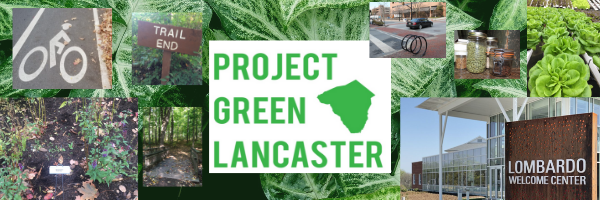Lancaster is taking initiatives to make the city a better, healthier place to live.
By Elizabeth Goetz
Lancaster City has been working on ways to be more environmentally friendly. There are multiple projects that help the city in their journey on going green. Having green infrastructure can ensure the rain water is thoroughly soaked up no matter where it may fall. Rain gardens, trees, green roofs, porous asphalt and bioswales are all examples of green infrastructure that Lancaster is managing.
The city also has a partnership with the Alliance for the Chesapeake Bay, which helps educate people about green infrastructure. Lancaster is responsible for an estimated 508 million gallons of polluted water flowing straight to the Conestoga River, Chesapeake Bay, as well as other nearby streams. Combined Sewage Overflow (CSO) can affect the health of animals and people that live near water. Practicing the use of green infrastructure such as rain gardens, bioswales, etc. will help rivers and streams be as healthy as can be.
Examples of Green Infrastructure
- Rain Gardens: a depressed part of a landscape that collects rain water and allows it to soak into the ground. They reduce runoff water while looking beautiful.
- Green roofs: plants and vegetation clinging to the side and the tops of buildings to soak up water.
- Porous asphalt: allows water to soak in more easily, preventing flooding.
- Bioswales: shallow, vegetated depressions that break down stormwater as it moves downstream.
According to https://globaldesigningcities.org, Green Infrastructure is important because…
- Designs contribute to city’s character and identity
- Trees provide temperature reductions
- Contributes to better water quality
- Encourages outdoor activity
- Create a diverse community
- Manageable runoff water
- Improves air quality
Trees are also an important aspect in any location going green. Lancaster Tree Tenders has a partnership with the city of Lancaster to plant and care for the trees. Trees enhance the overall air, making the air a bit less polluted in a bustling city.
The Heat Island Effect is also present in Lancaster, as well as any other city. The Heat Island Effect is heat emission by human activity in heavily populated areas. Bioswales and rain gardens are put in cities to help lessen the Heat Island Effect in that specific area. In contrast, there are also “cool islands” in less developed areas. Lancaster’s goal is to get as close to a totally cool island.
https://skepticalscience.com/graphics.php?g=251
Related Stories
Charlotte Katzenmoyer is a Director of Public Works for the city of Lancaster. She explains how the ground is used to clean stormwater. Simply, when the water is run through the ground, the bacteria that is in the stormwater is eaten away, leaving mostly clean water.
Fritz Schroeder is the Director of the Lancaster-based non-profit “Live Green,” which educates Lancaster residents on clean water issues. She explains how storm water will be eventually caught with some form of green infrastructure and guided back to its natural environment.
Using green infrastructure, planting trees and acknowledging the Heat Island Effect will make Lancaster a safer and healthier place to live.
Photos taken by: Elizabeth Goetz; Lancaster, PA.
Video by Elizabeth Goetz
http://saveitlancaster.com/?page_id=18
References
https://www.allianceforthebay.org/green-infrastructure/
https://cityoflancasterpa.com/stormwater-information/green-infrastructure/






